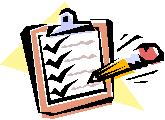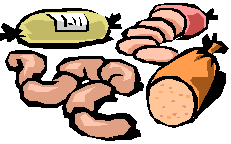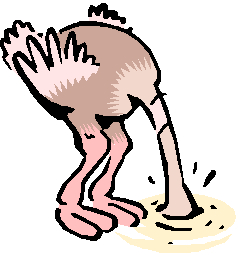Put It All Together
Let's Begin
We're ready to put it all together.
Our dogs, like our children, must be taught to live and respond in a structured society with rules, rewards and consequences. Our goal in raising our children and dogs is to instill an attitude of a happy, enthusiast learner, ready to respond to any situation with a happy attitude.
Our goal with our dogs is off-leash obedience without the use of food as reward. We use the least amount of force necessary to get the job done, using a praise/correction balance. The job is to get the dog's attention so that they can be redirected.
Learning only takes place in a positive environment through fun and play. There is no learning through only discipline. Yes, there must be a structured discipline program in place for the proper understanding and respect for authority, but by no means is the discipline to be excessive.
Discipline must be administered in varying degrees in accordance with the crime and the frequency of the crime. The only way for your dog or anyone to properly learn is to have the inappropriate behavior interrupted while it is happening, and then have the dog or individual redirected to an acceptable behavior or activity. Only then can this be called a correction.
In another words, if you want to teach the dog, interrupt their behavior, then immediately redirect it to the right behavior and then reward enthusiastically. Our foundation in our learning program is to have our dog respond in a certain way when they hear our voice commands.
After all, off-leash means no physical control over the dog with a leash or our hands. The dog must want to be with us and not be afraid of us; this is what we call respect.
For the dog to respond properly to these commands, it takes some programming to be effective. The dog must, on the subconscious level, respond appropriately to the commands. |
|
|
Pavlov was a scientist in the 19th century whose great discovery was that of condition response learning. What he did was take a group of dogs, one at a time, and attach test tubes to their cheeks to measure the response of their salivating. He set up a situation where he would ring a bell (as the signal), then present a plate of food to the hungry dog (as the motivation), and the dog would salivate (as the behavior). The response was measured, then the dog would receive the food (as the reward). After a series of repetitions of this exercise, he found that the dog would respond with the same intensity of salivation even when the food was not presented. Which led to the conclusion that behaviors could in fact be triggered with a signal without the motivation or the dog thinking about performing the response or not. It became an automatic response when hearing the signal. |
We want to use our words rather than a bell, but you can use a bell or whistle to trigger the positive signal. Dolphin trainers use a whistle to trigger their reward so that the dolphin can hear the signal even underwater. It is inconvenient to carry a whistle or a pocket full of food, so we use our words to communicate our reward. Food is a primary reinforcer. There are only four primary reinforcers available for all organisms, They are food, water, air, and sex. A primary reinforcer is something that, when applied to an organism, lets the organism know that this is a positive event. A secondary reinforcer is something (a signal) that triggers a primary reinforcer. Our goal in laying our positive signal is to trigger the most intense response from our signal. Pavlov used hunger to increase the intensity of the dog's responses. We can do the same or offer a more palatable treat. Your dog may get stimulated from a dry cookie, but will get extremely excited when offered a piece of fresh, cooked liver. Your signal will trigger the response you program into your dog. I recommend you make the response very intense for the most attention.
|
|
During our training sessions, and other times, we need to interrupt our dog's behavior when they start to engage in an activity we find unacceptable. We don't want to hurt or instill pain in our sessions because this alters the dog's mood from a happy worker to a sad performer. Modern scientists did a take off of Pavlov's Law by taking a group of volunteers and putting them in a chair and attaching them to biofeedback meters to measure their body responses. They then told the students that whenever they saw a light signal and heard a tone, they would get an electrical shock. When they received that shock, the students would tense up their bodies to receive the shock. Again, after a few repetitions of these exercises the electrical shock was not applied, but the student would still tense up their body as if they received the shock.
|
It is this flinching response we want when our dogs hear our command "No"; that momentary tensing of their bodies so we can redirect the activity. We are all familiar with the dog who has selective hearing when they are excited about something. Again, we are talking about a mood in our dog. If our foundation training is to be effective, we must train in the most intense mood we can. To program our signal, and for it to be effective, we must duplicate that intense state and then program our signal.
|
|
|
We program "No" by playing with our dog on the sidewalk with their favorite toy, tossing it to and fro, playing tug of war, running and having a merry time. Then with yourself positioned so that your dog is between you and the street, throw their toy into the street and wait until your dog steps off the curb, immediately and abruptly say "No" and tug on the leash as hard as you can (as if you were really tugging your dog away from a fast moving approaching car), place the dog on the sidewalk saying "Good" and bend over and show the dog, by pointing to the street, saying "No" sharply. Then point to the sidewalk saying "Good", then point to the street saying "No" sharply, then point to the side walk saying "Good". Then begin playing with your dog on the sidewalk again and repeat the exercise. If you follow this format, your dog will refrain from running into the street after a fast moving object or toy no matter how much they want to. They also develop a new respect for the command "No". Now you should never have to tug on your dog in that manner again. When we start our formal training, whenever we tug on the leash, we say "No" at the same time; this reminds the dog of the street punishment.
|

Continue to The Importance of Attention












